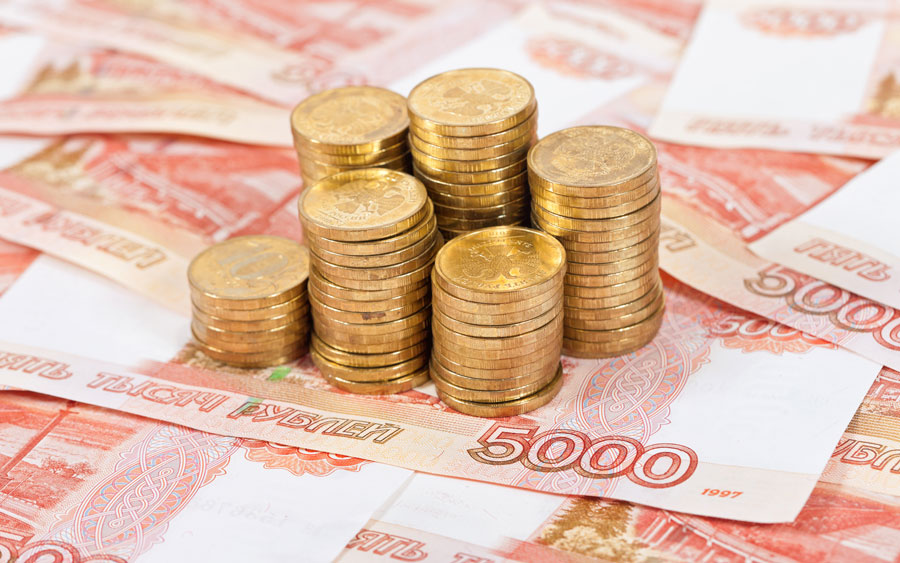Where not to expect growth
Contrary to popular opinion, the decline in oil prices in 2015-2016 is not the principal problem facing the Russian economy.

Kirill Rogov
Lucid discussions of today’s key economic issue – where to expect growth, and the reasons for its absence – are largely missing from the current debate, while the public is simultaneously being inured to the idea that the absence of growth is really nothing out of the ordinary, that it is, in fact, the new norm.
Contrary to popular opinion, the decline in oil prices in 2015-2016 is not the principal problem facing the Russian economy. The principal problem is that Russia is experiencing a period of long-term stagnation: its GDP has risen by a mere 1.5% between 2008 and 2016. During this period, the global economy has grown by 18%, developing countries by 40%, Kazakhstan by 42%, and Turkey by 32%; even Brazil – a country with certain similarities to Russia – grew by some 17%. But what factors are behind Russia’s virtually non-existent growth?
It is clear that oil is not to blame. Oil has been extraordinarily abundant during this period, and export revenues are at 2005 levels even today; but back then we regarded this as an absolute windfall, and the economy was growing by 7% a year. The majority of oil-producing countries, too, experienced relatively high growth rates during the second oil boom (2010-2014).
For several years now, experts have been debating the fashionable notion of the “middle-income trap,” wherein developing countries experience sharp decelerations in growth once the “easy” sources of that growth have been exhausted. The theoretical foundation of this hypothesis deserves a discussion of its own, as do the potential mechanisms of deceleration, but the empirical fact is that countries with 2008 per capita GDPs (PPP) comparable to Russia’s have seen a median annual growth rate of 3% (higher than the world average); only four countries in this group have recorded no growth over the last eight years.
Poor institutions are often put forward as conducive to economic slowdowns – a legitimate enough argument. In the 2000s, though, our institutions weren’t much to write home about either, yet we enjoyed an average annual growth rate of 7%. What is it, then, that has changed so drastically? Precisely what institutional transformations have taken us from rapid growth to complete stagnation?
In Russia, multi-pronged “strategies” for the improvement of anything and everything materialise every half-decade or so
The improvement of institutions is a long-term challenge; given current levels of economic development, very little can feasibly be achieved within the timescale of a few years. It is therefore critical to understand exactly what is inhibiting growth. In Russia, multi-pronged “strategies” for the improvement of anything and everything materialise every half-decade or so, but, being fundamentally unrealisable, they’re not remotely worthy of being so called. This is what architects dub “paper architecture.” And the more “good stuff” is crammed into these “strategies,” the less realisable they become. Identifying a priority – one that is realisable and would stimulate growth in spite of any other restrictions – represents a fundamentally important task. Prioritising something that looks good on paper may ultimately prove a dead end. Let’s consider one particularly topical example.
Today, an inflation target of 4% is a virtual fetish of Russian economic policy. Low inflation is indisputably a good thing, and the logic of the economic authorities is absolutely clear: low inflation means lower lending rates and is conducive to long-term investment. It is not, however, the sole prerequisite for the latter. If other risks are high, low inflation won’t do a great deal to help. For example, political risks of various kinds have traditionally been high in Russia, and they have increased yet further over the last two years. Furthermore, there is only so much the Russian authorities can do as far as macroeconomic regulation is concerned. The Russian rouble is a commodity currency, and our economy depends on a segment of the world market characterised by immense price volatility. Given this situation, can we turn domestic price stability into a competitive advantage? If you’ve no ear for music but still hanker to perform on stage, you’re better off trying your luck at the playhouse than the opera house. Your chances of success will be slightly higher.
Not only is accelerated growth not incongruous with high single-digit inflation, but the two actually tend to go hand in hand.
On the other hand, here’s a simple empirical argument. Over the last fifteen years, annual inflation in countries with high long-term growth rates (“high” meaning growth of at least 5% per year throughout the period in question) has averaged 8%. Prior to 2011, incidentally, Russia too fitted into this general trend. In today’s global economic conditions, then, not only is accelerated growth not incongruous with high single-digit inflation, but the two actually tend to go hand in hand. This is entirely in keeping with findings by the World Bank’s Commission on Economic Growth: having analysed the experience of rapid-growth countries over the last forty years, the Commission concluded that single-digit, rather than low, inflation was a precondition of success.
Low inflation is typically to be found in developed countries with a developed market infrastructure; in developing countries, meanwhile, economic bottlenecks, disequilibrium in the markets, insufficiently developed financial systems, low confidence and market entry costs all lead to situations wherein the supply of goods fails to respond in an optimum way to changes in demand or money supply.
In such conditions, maintaining excessively low inflation, out of kilter with the objective structure of the economy and the state of financial markets, would result in the increased influence of non-market factors and the weakening of the market sector. For example, the monetary authorities would maintain high lending rates in order to bring down inflation, and the government, acting out of various non-economic considerations, would provide funds to individual sectors, businesses and consumers on non-market terms.
Those who enjoy government contracts and subsidies emerge the winners; those who operate in competitive markets lose out.
This, in large measure, is what’s happening in Russia today. The budget deficit is covered by printing money, which exerts inflationary pressure on the market. To compensate for this pressure, the Central Bank keeps the rate significantly higher than inflation. Those who enjoy government contracts and subsidies emerge the winners; those who operate in competitive markets lose out.
Let’s go through the process step by step. The government fulfils its spending obligations via taxes and printing money (and, lest we forget, one in every three roubles of federal spending currently goes towards security and defence). To compensate for inflationary pressures, meanwhile, the Central Bank imposes additional charges on loans to the commercial sector. In other words, as soon as you decide to produce something with market demand, you’re forced to contribute towards the country’s defence and security needs and God knows what else – and this on top of all your other taxes.
If an economy suffers from serious structural and institutional distortions that enable money to be redistributed through non-market channels, the lowering of inflation by means of an overly tough monetary policy leads to a situation wherein money becomes too expensive for economically efficient sectors and agents, and too cheap for inefficient ones. High lending rates and low inflation simply constitute a mechanism for redistributing funds from the market sector to the non-market sector. By the same token, relatively high single-digit inflation in fast-growing developing countries is a reflection of the reverse process, compensating for structural distortions.
The conclusions to be drawn here are the following. First of all, the Russian economy does not currently require fiscal consolidation in and of itself. What it needs is a dramatic (preemptive) curtailment of non-productive budget spending; without such a curtailment, fiscal consolidation would have an even more detrimental effect on the economy than a lack thereof. The Russian economy most likely will not require low inflation until the influence of other important limitations on investment is weakened. Again, if this condition is not met, low inflation will prove even more detrimental for the economy than relatively high inflation, strengthening non-market and poorly performing sectors at the expense of sectors of potential growth. The horse mustn’t be put before the cart.
There’s no reason to doubt the professional competence of certain economic experts working for the government, the Central Bank, and the presidential administration. But there are sound reasons to doubt the motives and mechanisms of decision-making. Out of a range of measures conducive to an increase in investment activity (and consequently economic growth), low inflation may be selected and prioritised not because of its greater effectiveness, but simply because all the others have proved politically unacceptable.
This article was first published in Vedomosti



